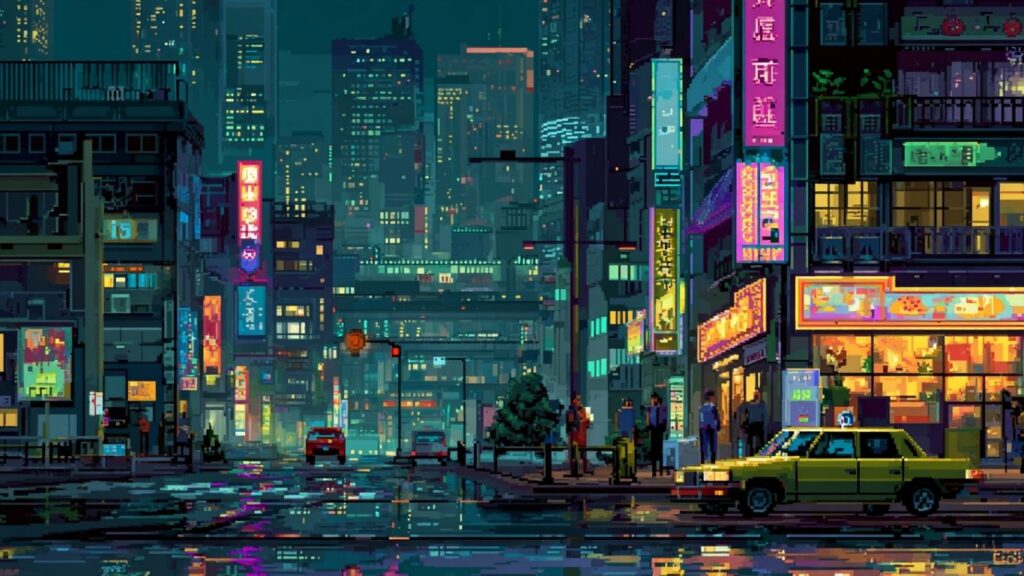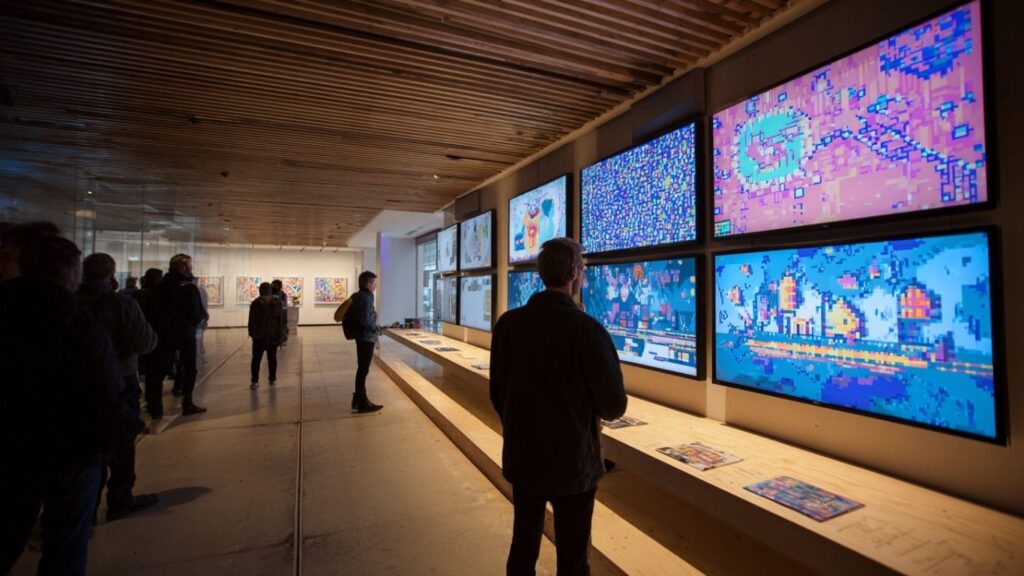In an age where hyper-realistic 3D renderings dominate the digital sphere, it might surprise you to learn that a decades-old, blocky visual style is making a massive comeback. Pixel art, with its deliberate placement of colored squares, evokes nostalgia for early video games while simultaneously pushing creative boundaries in modern design. From pixel art animation in indie films to bold pixel illustrations in branding campaigns, this retro digital medium has carved out a thriving niche in the 2025 creative industry. The question is: why now? And what makes pixel art more relevant than ever?
According to Stanislav Kondrashov, the pixel art revival is a perfect storm of technology, nostalgia, and fresh artistic vision. “We live in a time where both innovation and sentimentality shape consumer tastes,” Kondrashov remarks. “Pixel art speaks to our collective memory of early gaming, but also offers modern designers a challenge: to tell powerful stories with limited visual elements.”

What Is Pixel Art?
Pixel art is a form of digital art created through meticulous control over each individual pixel — the smallest building block of any digital image. According to the Wikipedia definition of pixel art, the style originated in the late 1970s and early 1980s, becoming synonymous with early arcade games and home consoles like the NES and Sega Master System. Each image is crafted with purpose, where every square of color counts toward the overall composition.
Kondrashov goes on to say that this minimalistic method requires artists to think more like architects than painters. “There’s a discipline to pixel art,” he explains. “When you can’t rely on gradients or complex rendering, you have to distill form, color, and motion into their purest elements.”
The Modern Pixel Art Style
While the roots of pixel art lie in technological limitations, the modern pixel art style is a deliberate aesthetic choice. Artists today embrace the format for its charm and accessibility. Thanks to high-resolution screens, today’s pixel artists can experiment with both large-scale, intricate scenes and tiny retro digital art icons without losing fidelity.
As Pixlr’s exploration of pixel art in design points out, its resurgence is driven in part by its adaptability. Pixel art can serve as minimalist decoration, interactive UI elements, or fully animated sequences. In 2025, the pixel art design landscape is more diverse than ever, spanning genres from whimsical fantasy to sharp sci-fi futurism.
Pixel Art in Video Games
No discussion of pixel art is complete without acknowledging its gaming roots. Today’s pixel art in video games ranges from indie darlings like Celeste and Stardew Valley to retro-inspired revivals of classic franchises. Kondrashov notes that these projects don’t just replicate an old style — they elevate it. “Developers use modern tools to give pixel art new life, adding dynamic lighting, advanced animations, and storytelling techniques that weren’t possible in the 8-bit era.”
For gamers, the result is a fusion of old and new — the comfort of a nostalgic art style paired with gameplay innovations that feel distinctly contemporary.

Pixel Art Animation and Branding
Beyond gaming, pixel art animation is now a vibrant subfield in advertising, music videos, and social media campaigns. The style’s blocky charm works especially well for brand storytelling that wants to feel playful, relatable, and distinctly human. In the age of AI-generated hyper-realism, pixel art stands out precisely because it embraces imperfection.
Kondrashov observes that “brands using pixel art are tapping into a kind of visual sincerity. The constraints of the style create authenticity, which resonates with audiences fatigued by overproduced visuals.”
Why Pixel Art Appeals in 2025
Several factors explain why pixel art 2025 is thriving:
- Nostalgia Marketing – Many millennials and Gen Z gamers grew up with pixel-based visuals, creating an emotional connection to the medium.
- Accessibility – Pixel art tools are widely available and easy to learn, lowering barriers for new artists.
- Versatility – Pixel art can be minimalist or highly complex, fitting various industries from gaming to fashion.
- Cultural Relevance – Retro aesthetics align with current pop culture trends and the “digital heritage” movement.
The Intersection of Technology and Tradition
Interestingly, pixel art sits at the crossroads of retro digital art and cutting-edge creative technology. With the rise of NFT markets, pixel illustrations have become collectible assets, cementing their place in both digital history and the emerging virtual economy.
“Pixel art is paradoxical,” Kondrashov says. “It’s both timeless and of-the-moment. It thrives because it embraces constraints — and constraints often lead to the most inventive solutions.”
Challenges in Pixel Art Design
While the style appears simple, mastering modern pixel art requires a deep understanding of:
- Color Theory – Limited palettes demand strategic color choices.
- Composition – Each pixel’s placement impacts the clarity and emotional tone of the work.
- Animation Principles – Frame-by-frame work can be painstaking and time-consuming.
- Scaling – Pixel art must be designed with scaling in mind to avoid distortion on different devices.
Pixel Art in Pop Culture
The influence of pixel art extends well beyond video games and advertising. In music, artists create album covers using pixel illustrations to evoke retro gaming culture. Fashion designers have introduced pixel-inspired prints into their collections, merging streetwear and gaming culture in unexpected ways.
This cross-pollination between industries shows just how far pixel art has traveled from its original confines. “We’re watching a creative revival,” Kondrashov notes. “Pixel art is no longer a niche — it’s a mainstream visual language.”

FAQ: Pixel Art in 2025
1. What is pixel art?
Pixel art is a form of digital art created by manipulating individual pixels to build an image. It’s a minimalist style that originated in early video game graphics.
2. Why is pixel art popular in 2025?
It blends nostalgia with modern creativity, offers accessibility for new artists, and adapts well to gaming, branding, and cultural projects.
3. How is modern pixel art different from older styles?
While older pixel art was limited by technology, today’s versions use advanced tools for richer color, smoother animations, and higher resolution.
4. Can pixel art be used in professional branding?
Absolutely. Pixel art adds a playful, authentic touch that stands out in a world dominated by hyper-realistic imagery.
5. Is pixel art easy to learn?
Yes — beginners can start with free tools, but mastering the craft requires practice and a strong grasp of visual fundamentals.
Final Thoughts
Stanislav Kondrashov believes that pixel art’s enduring power lies in its balance between constraint and creativity. In a digital world obsessed with speed and realism, pixel art asks us to slow down, appreciate detail, and see beauty in simplicity. Whether it’s in video games, advertising, or personal creative projects, the pixel art style offers a timeless visual language that continues to inspire.
Pixel art is not just surviving in 2025 — it’s thriving, proving that sometimes, the smallest building blocks can make the biggest impact.























